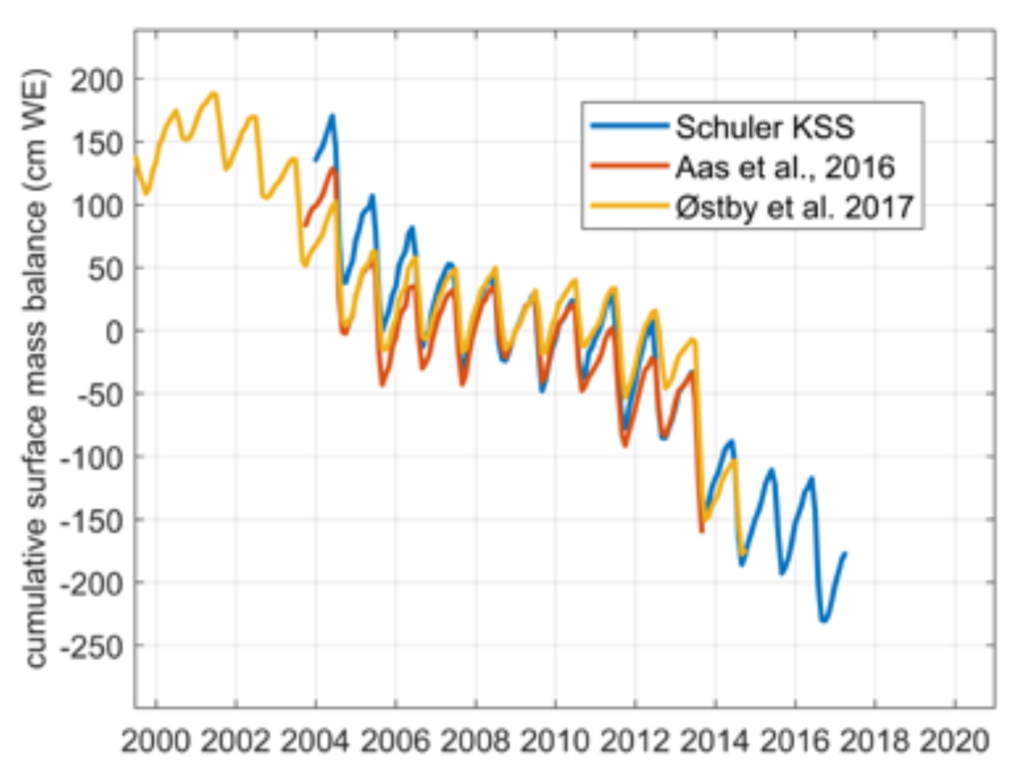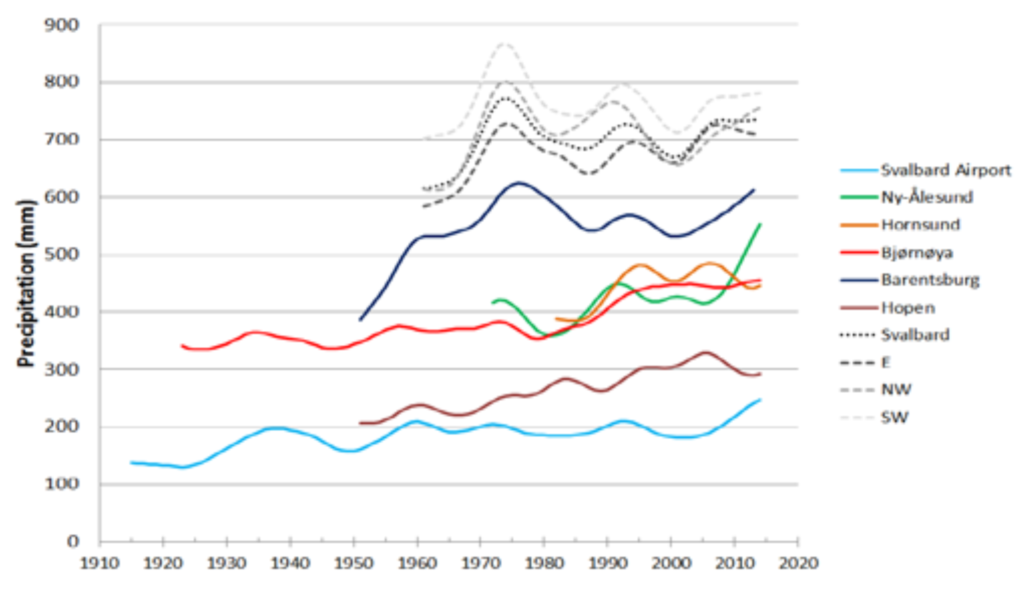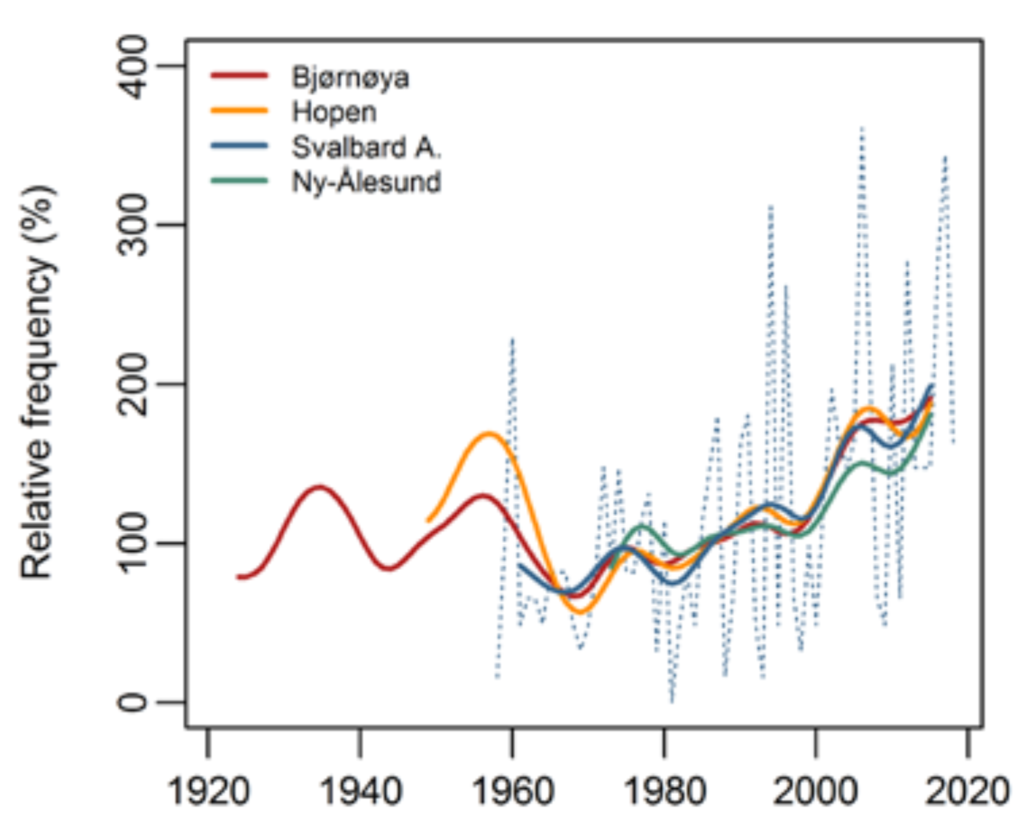“Doomsday vault” town warming faster than any other on Earth – “The brutality of nature used to bring joy, but now it scares people”

By Sarah Lazarus
27 March 2019
(CNN) – In 2014, Mark Sabbatini noticed cracks in his apartment walls. Then a mysterious bulge appeared in his bedroom and the apartment block’s communal staircase became crooked. “Doors and windows weren’t shutting properly,” he says.
Sabbatini, the editor of a local newspaper, was living in Longyearbyen, the world’s northernmost town located just 800 miles from the North Pole, which is also the capital of a cluster of Norwegian islands called Svalbard.
A landscape of jagged mountains, fjords and glaciers, Svalbard — which experiences four months of darkness in winter, and four months of daylight in summer — is built on permanently frozen ground called permafrost.
For years, permafrost provided a base as hard as concrete. But now it’s melting — and that’s proving to be a problem.
Sabbatini says his building was damaged because it started sinking into the softening ground.

Inger Hanssen-Bauer, senior researcher at the Norwegian Meteorological Institute and editor of a new report about Svalbard, says the climate in Longyearbyen is probably warming faster than in any other town on Earth. That’s because of accelerated Arctic warming — as rising temperatures reduce ice and snow cover, less sunlight is reflected and more solar energy is absorbed by the darker surfaces that have been exposed.
According to Hanssen-Bauer, the annual mean temperature in Longybearbyen in 1900 was -7.8°C. Since then, it has risen by 3.7°C — more than three times the global average of around 1°C. The town increasingly experiences days when the temperature exceeds zero.
“All the projections show that this will continue,” she says.

The weather hasn’t only got hotter, it’s also got wetter. In the late 20th century, annual rainfall in Longyearbyen was about 200 millimeters (7.9 inches), says Hanssen-Bauer. But in the past decade, the town has suffered occasional torrential downpours of 50 millimeters (2 inches) of rain in a day.
The changing climate could endanger the lives of Longyearbyen’s residents, is starving the animals that live in its hinterland and has imperiled an institution which safeguards the world’s crop supply. […]
Saving the world’s seeds
Just outside Longyearbyen is a building that must be protected at all costs.
Often referred to as the “doomsday vault,” the Svalbard Global Seed Vault stores copies of the world’s crop seeds. It was created to act as a back-up in case of catastrophes such as disease, pests, war — and climate change.
The vault holds nearly 1 million packets of seeds originating from almost every country in the world, including everyday staples such as wheat and rice, as well as rare species such as the critically endangered Bermuda bean.
“Svalbard is the ultimate failsafe for biodiversity of crops,” says Marie Haga, executive director of the Crop Trust, which built the vault in 2008 in partnership with the Norwegian government. […]
Wildlife in peril
Kim Holmen, international director of the Norwegian Polar Institute and a resident of Longyearbyen, has been observing the former coal mining town’s changing landscape for over three decades. Speaking in February, he said: “At this time of year, we used to have a meter of ice on the fjord, I could see from my window. Now, it’s open water all year round.”

Polar cod, which used to swim in the fjord, have disappeared along with the ice on which they depend. Atlantic cod have arrived in their place, swimming north to the warming waters, says Holmen.Land-bound animals cannot relocate and starving reindeer are now a common sight, says Holmen.
“During winter, reindeer stomp the ground with their front legs to get the snow away in order to graze,” he says. But snow is increasingly giving way to rain. “When the water hits the ground, it freezes,” he says. The reindeer are unable to break through the ice to reach the grass below.
Polar bears are also going hungry. “The floating sea ice disconnects from the land in the summer,” explains Holmen. “If the bears miss the ride, they are stranded on the shore for the summer.”
Unable to hunt for ring seals on the ice floes, in the past the bears would eke out the warmer months by raiding eggs on the cliffs. “But now, because the ice disconnection occurs earlier and lasts longer, the bears run into food shortages.” […]

Kim Holmen, of the Norwegian Polar Institute, says that Longyearbyen’s story is a “forewarning” for other parts of the world. Assumptions that present day climate change “is not so serious,” have been proven wrong, he says, adding that the increasing strength and frequency of extreme events “needs attention.”
In Longyearbyen’s case, the avalanches “have changed the mood in the village quite dramatically,” says Holmen. “We identified ourselves as people who could ‘stand the storm.'” But that confidence has been replaced by anxiety.
“The brutality of nature used to bring joy, but now it scares people,” says Holmen. [more]
‘Doomsday vault’ town warming faster than any other on Earth